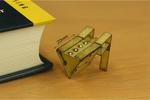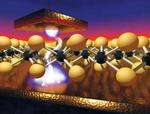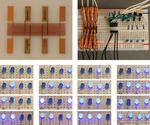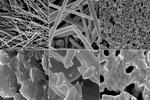Other
“First demonstration of self-assembling and self-disassembling silicon microparticles could form the basis for designing artificial muscles and reconfigurable computer systems Researchers at Duke University and North Carolina State University have demonstrated the first custom semiconductor microparticles that can be steered …

“How small creatures generate world’s fastest snaps, jumps and punches When it comes to things that are ultrafast and lightweight, robots can’t hold a candle to the fastest-jumping insects and other small-but-powerful creatures. New research could help explain …

“International project led by Duke University engineers receives $6 million from Army Research Office An international team of researchers led by Duke University has received more than $9 million to investigate the potential advantages of using a “spectator qubit” to …

“Metamaterial device controls transmission and reflection of acoustic waves Metamaterials researchers at Duke University have demonstrated the design and construction of a thin material that can control the redirection and reflection of sound waves with almost perfect efficiency. While many …

“In trying to bring brain-like (neuromorphic) computing closer to reality, researchers have been working on the development of memory resistors, or memristors, which are resistors in a circuit that ‘remember’ their state even if you lose power. Today, most computers …

“Materials scientists at Duke University have developed a method to create hybrid thin-film materials that would otherwise be difficult or impossible to make. The technique could be the gateway to new generations of solar cells, light-emitting diodes and photodetectors. The …

“Removing symmetrical distortions allows successful scans with no prior knowledge of a wall’s material Researchers at Duke University have devised a way to see through walls using a narrow band of microwave frequencies without any advance knowledge of what …

“Recent advances in quantum computers may soon give hackers access to machines powerful enough to crack even the toughest of standard internet security codes. With these codes broken, all of our online data — from medical records to bank transactions — could …

“Autonomous robots can inspect nuclear power plants, clean up oil spills in the ocean, accompany fighter planes into combat and explore the surface of Mars. Yet for all their talents, robots still can’t make a cup of tea. That …

“Material scientists have predicted and built two new magnetic materials, atom-by-atom, using high-throughput computational models. The success marks a new era for the large-scale design of new magnetic materials at unprecedented speed. Although magnets abound in everyday life, they are …

“USB flash drives are already common accessories in offices and college campuses. But thanks to the rise in printable electronics, digital storage devices like these may soon be everywhere – including on our groceries, pill bottles and even clothing. Duke University …

“Researchers have developed a method to swiftly screen the non-coding DNA of the human genome for links to diseases that are driven by changes in gene regulation. The technique could revolutionize modern medicine’s understanding of the genetically inherited risks …

“By suspending tiny metal nanoparticles in liquids, Duke University scientists are brewing up conductive ink-jet printer “inks” to print inexpensive, customizable circuit patterns on just about any surface. Printed electronics, which are already being used on a wide scale in …
